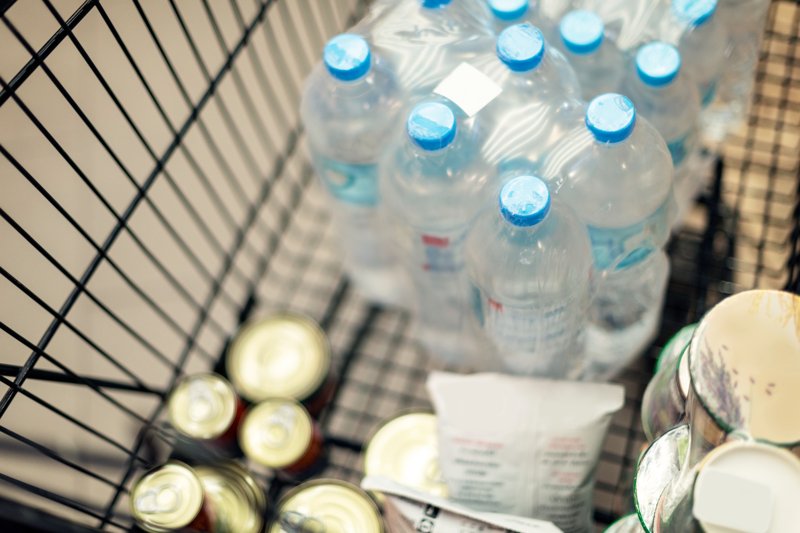How to Realistically Prepare for a Long-Term Shelter-in-Place
Posted on February 08 2025,
Preparing to shelter in place, whether for a short-term emergency or a long-term situation, requires careful planning and strategy. This guide outlines a step-by-step plan to help you gradually achieve self-sufficiency for up to six months. We’ll cover all the essentials from water and power to medical, communication, and more,,,
Step 1: Assess Your Shelter-in-Place Needs
 Before you start prepping evaluate your situation:
Before you start prepping evaluate your situation:
-
Location: Urban, suburban or rural settings each have unique challenges
-
Family Size: Consider the number of people and any pets in your household
-
Duration: Plan for 72 hours first then expand to one month, three months and six months
Step 2: Secure Your Water Supply
Water is the most critical resource for sheltering in place. Aim for at least one gallon of water per person per day. Add another half gallon per person, per day for hygiene and other needs.
Immediate and Short-Term Water Solutions:
-
Store Bottled Water: Keep bottled water on hand
-
Fill Bathtubs and Containers: Store extra water before an event
Long-Term Water Solutions:
-
Install Rainwater Harvesting Systems: Collect and store rainwater using tarps, barrels and tanks
-
Water Filters: Invest in high-quality filters to purify water
-
Chemical Treatments: Store water purification tablets for disinfecting
-
Backup Sources: Identify nearby ponds, lakes or streams for emergency water collection
Step 3: Establish Backup Power Options

Electricity is often one of the first utilities to fail during a crisis, so keeping at the forefront of your planning is a must.
Short-Term Power Solutions:
-
Portable Power Banks: Use to charge small devices
-
Battery-Powered Devices: Stockpile batteries for flashlights, radios and other essentials
Long-Term Power Solutions:
-
Solar Panels: Install rooftop panels or portable solar chargers
-
Generators: Use propane or gas-powered generators as backups
-
Manual Tools: Have hand-crank flashlights and radios
Step 4: Build Your Food Stockpile
 Food storage ensures is paramount during emergencies. Consider the number of family members and pets, start small and build your supply over time and make long-term plans.
Food storage ensures is paramount during emergencies. Consider the number of family members and pets, start small and build your supply over time and make long-term plans.
Short-Term Food Supplies:
-
Non-Perishables: Stock up on canned goods, dry pasta and rice
-
Freeze-Dried Meals: Purchase emergency meal kits for quick preparation
Long-Term Food Storage:
-
Grains and Legumes: Store in Mylar bags with oxygen absorbers
-
Dehydrated and Freeze-Dried Foods: Many have a shelf life up to 25 years
-
Home Preservation: Learn to can and dehydrate produce
-
Gardening: Start growing vegetables, herbs and fruit in your backyard or in containers in smaller spaces
Step 5: Maintain Hygiene and Sanitation
Preventing illness and maintaining good hygiene during a shelter-in-place scenario is something that is often overlooked. Here is a list of supplies to begin storing:
-
Stock Hygiene Products: Soap, shampoo, toothpaste, toilet paper and feminine products
-
Waste Management: Set up a composting toilet or store buckets and heavy-duty trash bags
-
Cleaning Supplies: Keep disinfectants, bleach and microfiber cloths
-
Laundry: Use hand-crank washers or tubs for manual washing
Step 6: Prepare Medical Supplies
 A well-stocked first aid kit is essential for both short- and long-term sheltering.
A well-stocked first aid kit is essential for both short- and long-term sheltering.
-
Basic First Aid Kit: Include bandages, antiseptics and over-the-counter medications
-
Prescription Medications: Stock a 90-day supply of essential meds
-
First Aid Skills: Learn CPR, wound care and how to manage common illnesses
-
Herbal Remedies: Grow medicinal plants like aloe vera, echinacea and chamomile. Learn how to use alternative medicine and treatments
Step 7: Ensure Communication
Staying informed and connected is vital during emergencies. Solutions should consider that power may be out.
-
Radios: Use NOAA weather radios for updates
-
Walkie-Talkies: Ideal for short-distance communication
-
Emergency Apps: Download apps like Zello or local alert systems
-
Backup Power: Ensure communication devices can be charged via solar or hand-crank power
Step 8: Plan for Defense and Security
Protecting your home and family is crucial in uncertain times.
-
Fortify Your Home: Install locks and reinforce doors and windows
-
Lighting: Use solar-powered motion lights around the property
-
Self-Defense Tools: Consider legal self-defense items such as pepper spray or personal alarms
-
Training: Learn basic self-defense techniques
Step 9: Gradual Steps to Six-Month Self-Sufficiency
 Phase 1 (0-1 Month):
Phase 1 (0-1 Month):
-
Stock up on bottled water, canned goods and hygiene products. Buy a few extras every time you shop
-
Create a basic first aid kit and emergency contact list
Phase 2 (1-3 Months):
-
Add long-term storage foods like rice, beans and freeze-dried meals
-
Set up rainwater harvesting and invest in water filters
-
Purchase solar chargers or portable generators
Phase 3 (3-6 Months):
-
Grow your own food through gardening and preserve surplus harvests
-
Learn first aid and home repair skills
-
Expand security measures and build community connections for mutual aid
Final Thoughts
Prepping for shelter-in-place scenarios doesn’t happen overnight, but taking small, consistent steps ensures you’ll be ready for emergencies of any duration. By addressing water, food, power and everything we've covered here, you can be confident in your preparations and care of you and your family.



0 comments